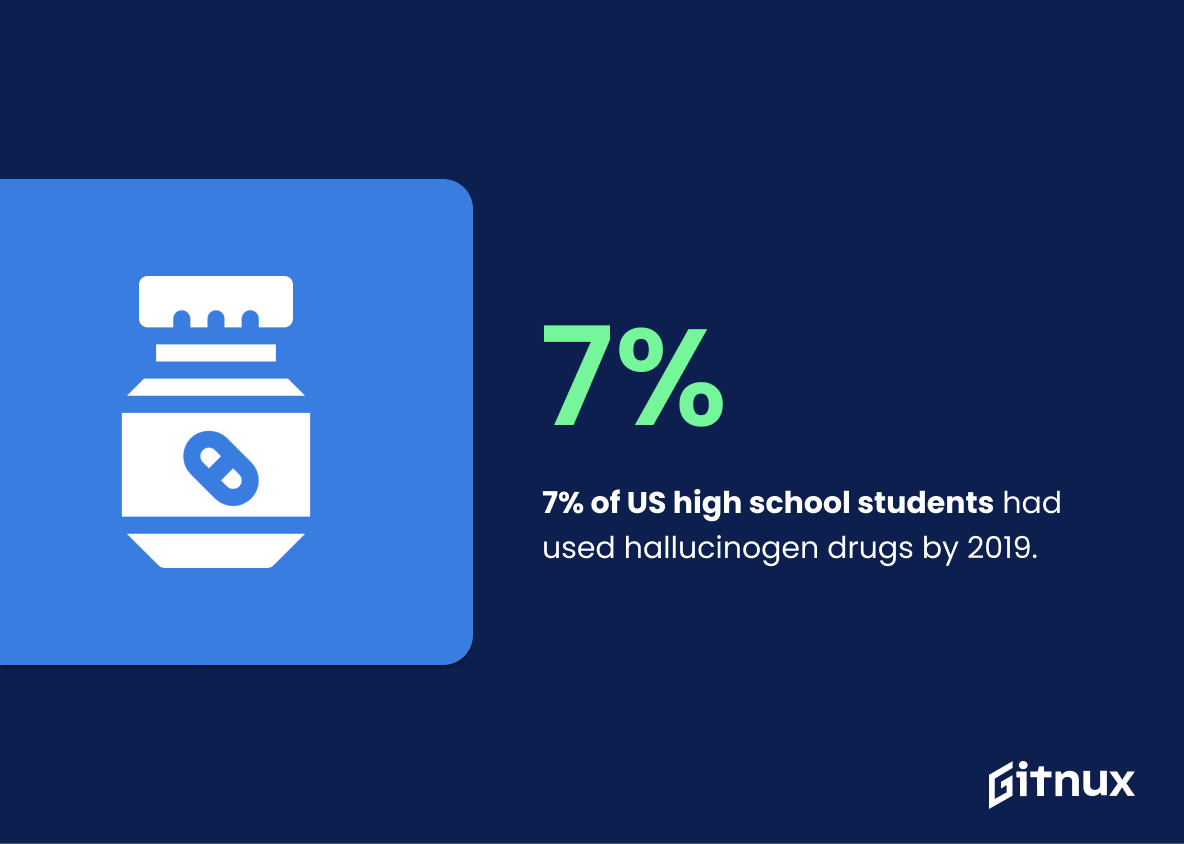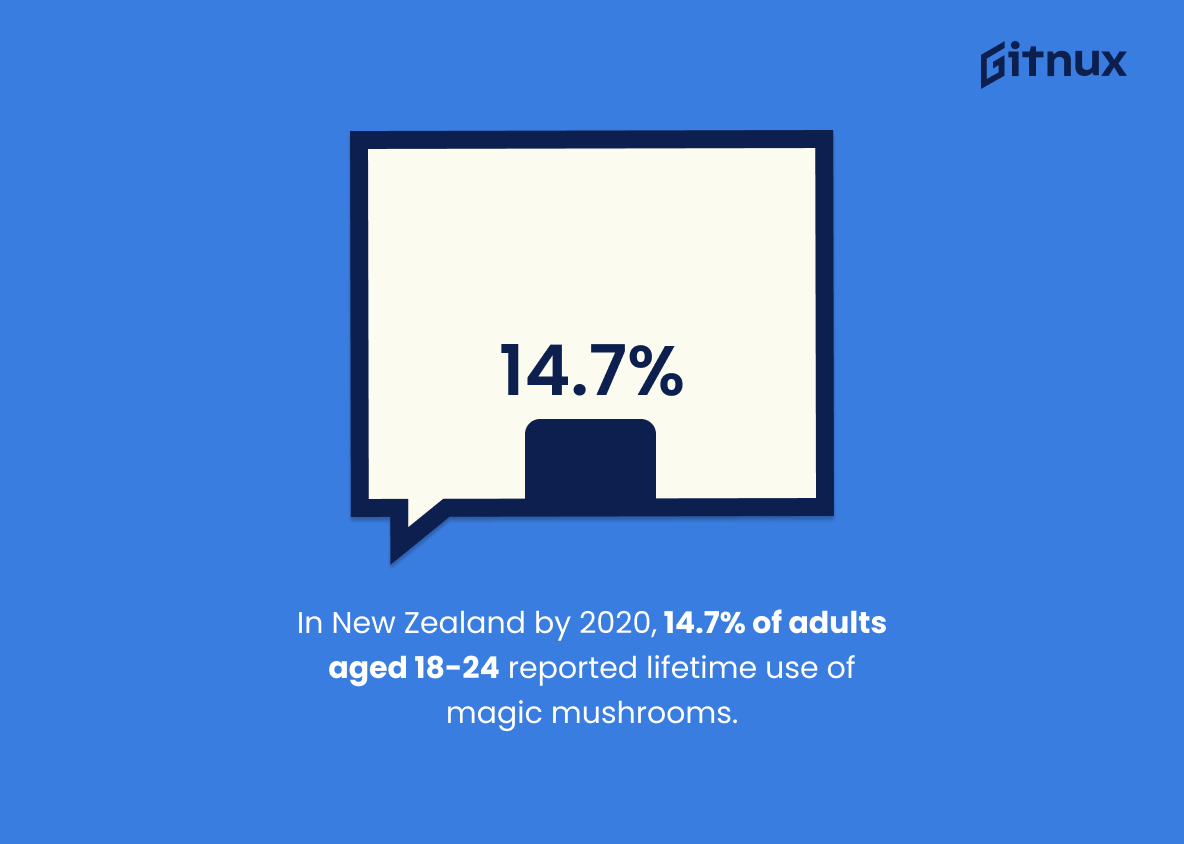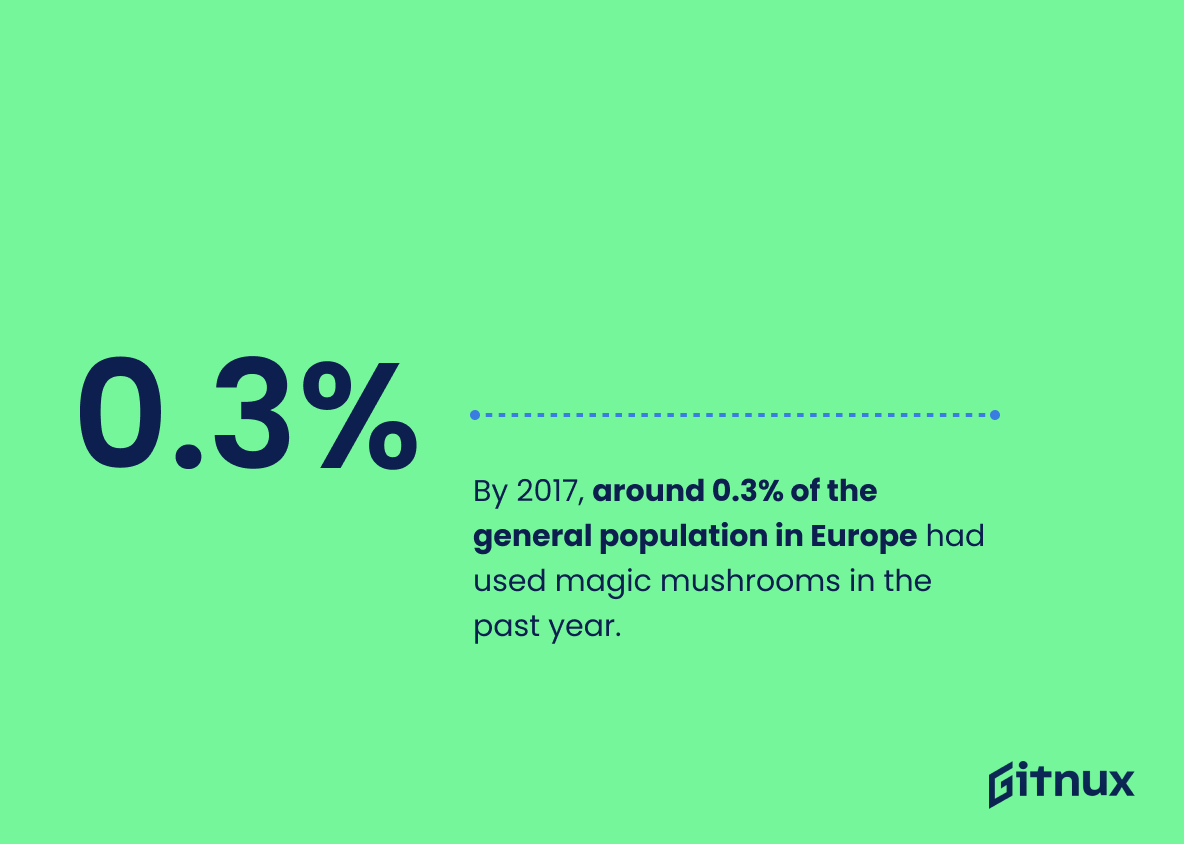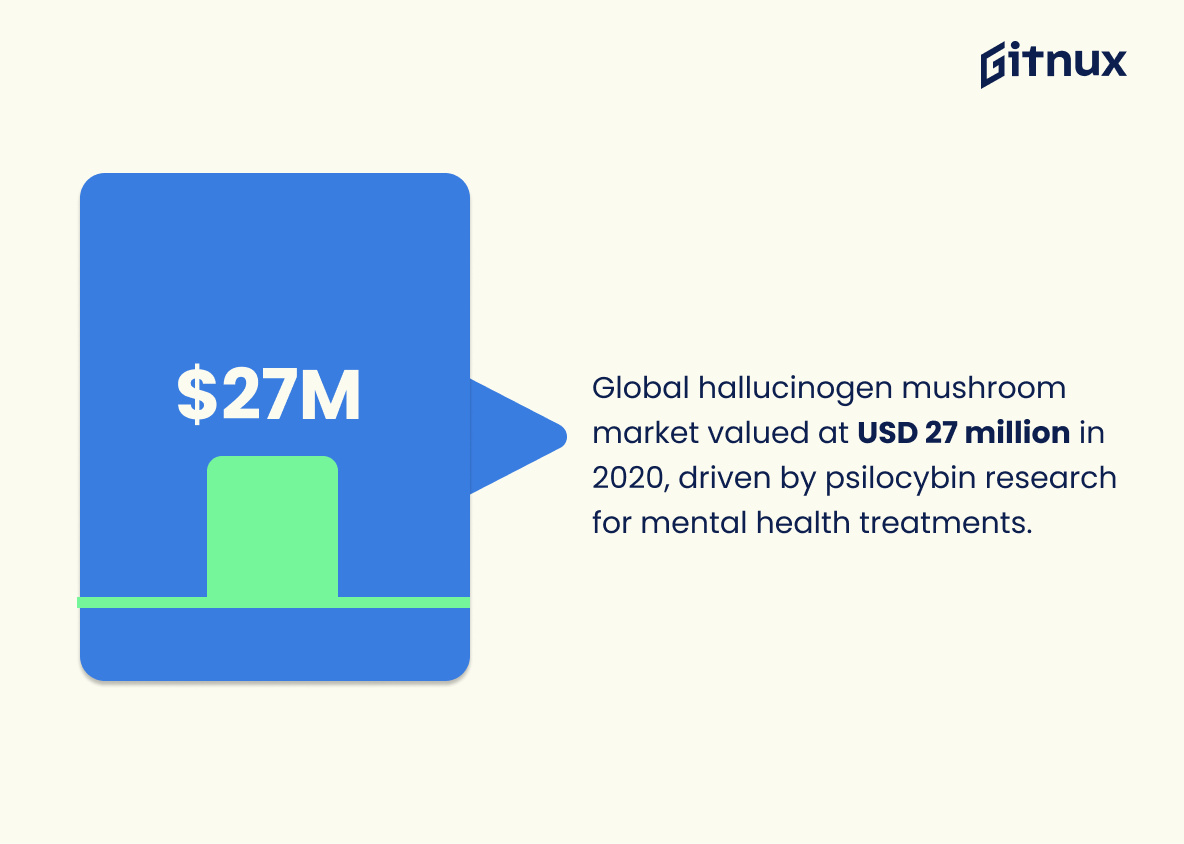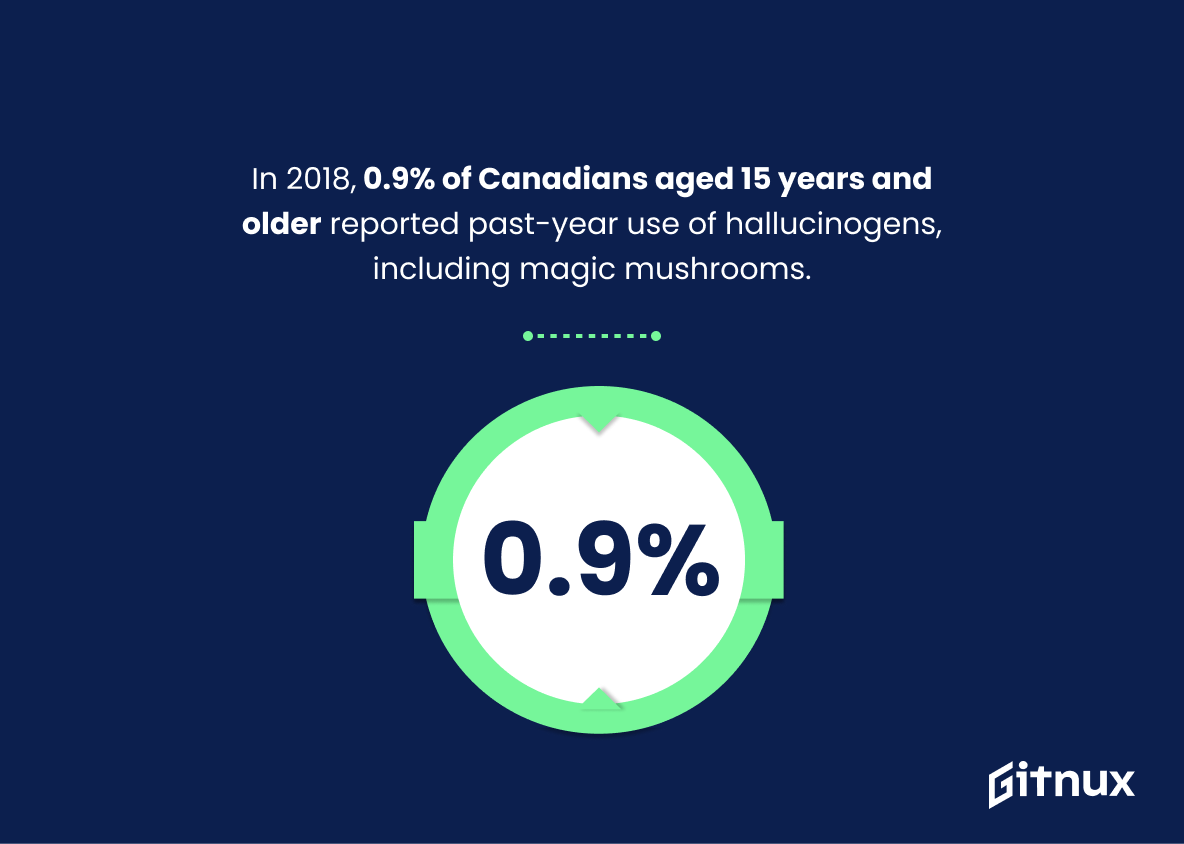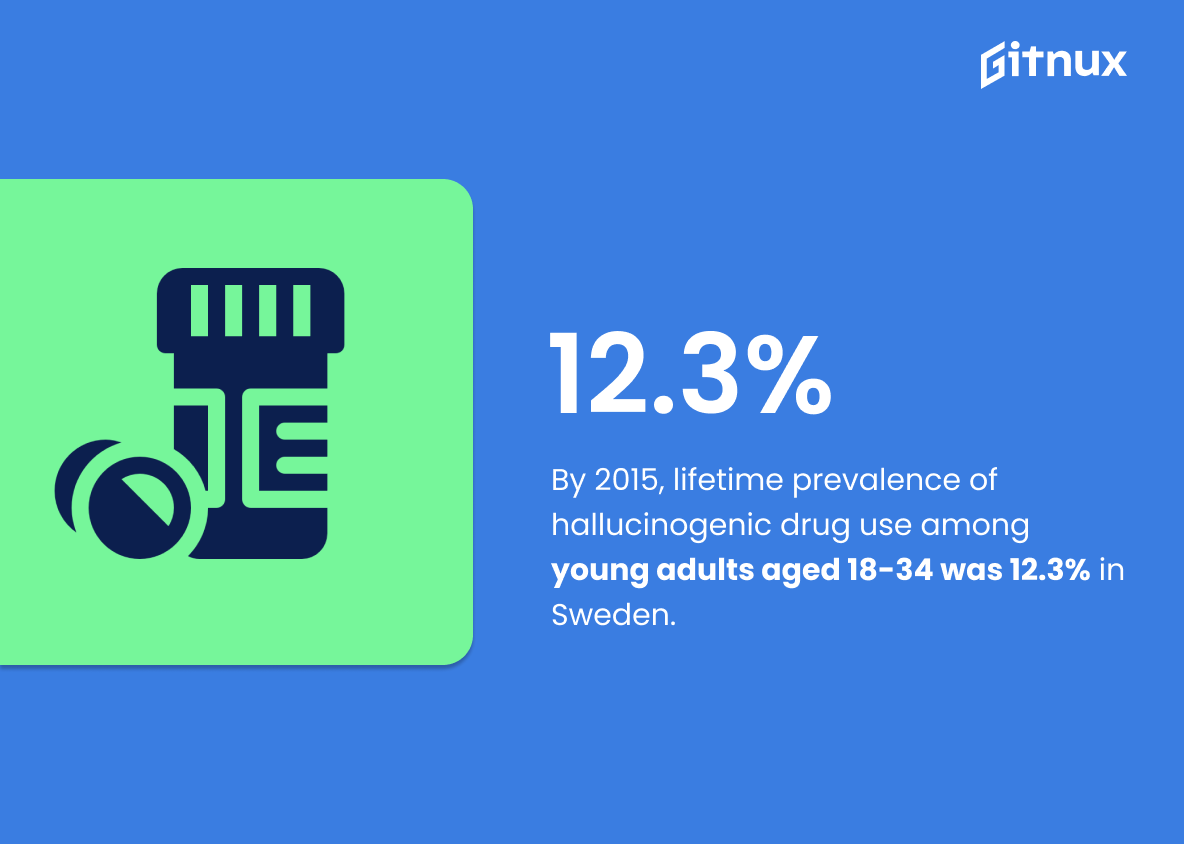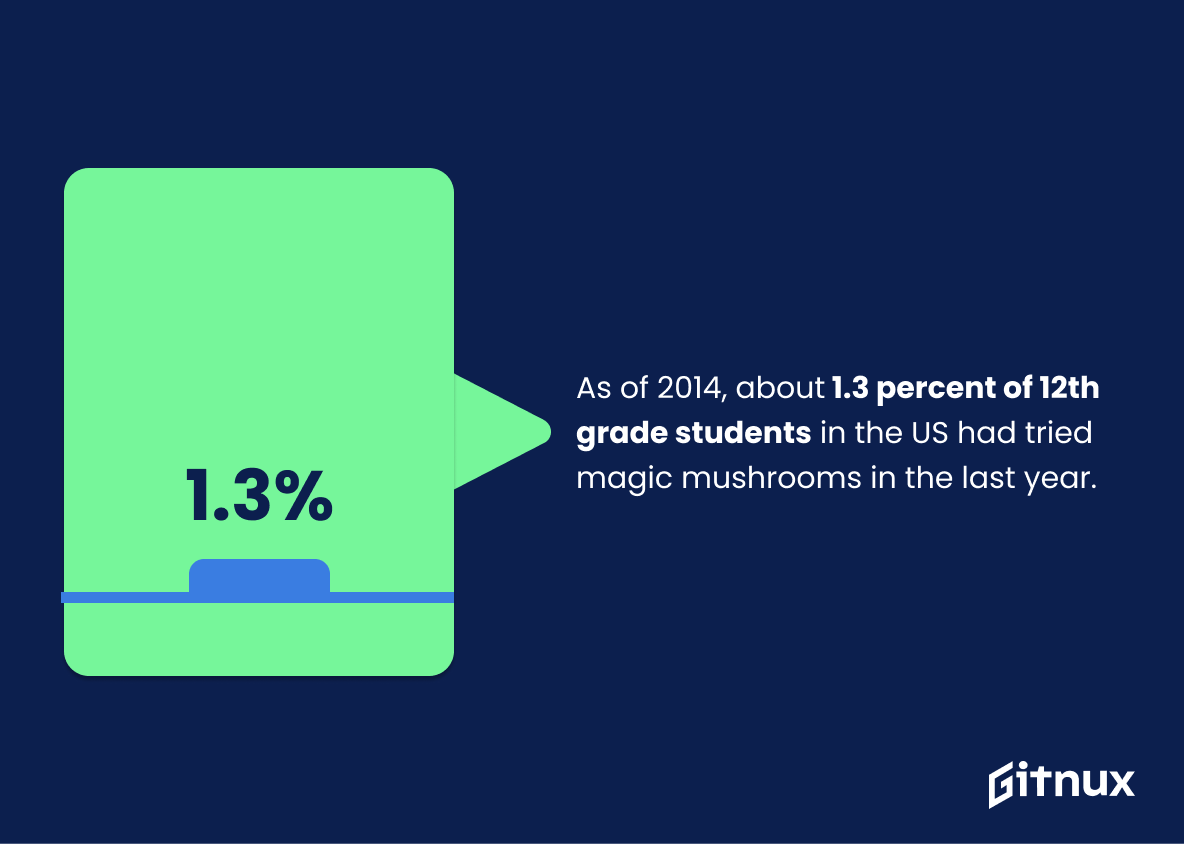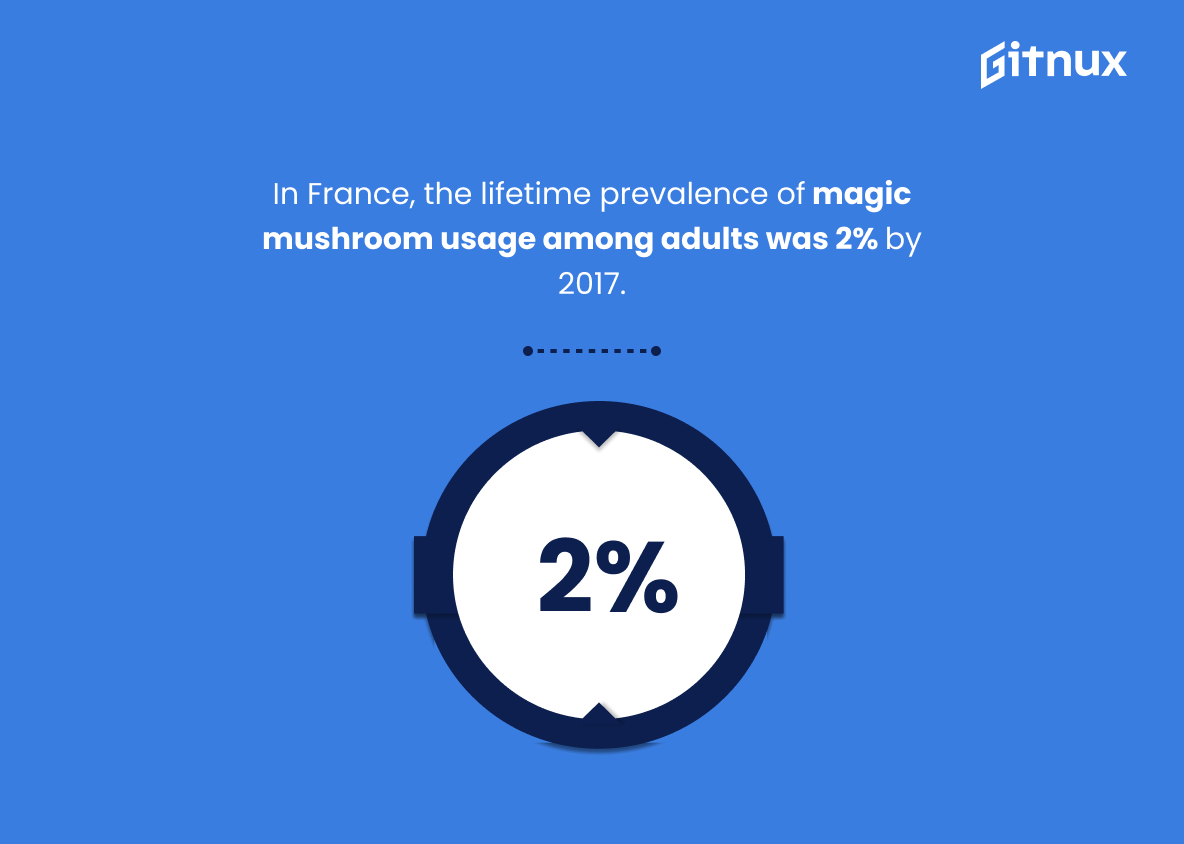Mushroom drugs, such as magic mushrooms, have been gaining popularity in recent years. According to a 2020 survey conducted worldwide, 32.2 million people reported lifetime use of psilocybin – the major compound found in mushroom drugs – by that year alone. In 2019, 9.3% of US adults aged 18-25 had ever used hallucinogens like these mushrooms and 2.98% of European adults aged 15-64 had tried them at least once in their lifetime by 2021 according to another study from the same year.
In Canada between 2018 and 2019 approximately 21.6% of Canadians between 15 and 64 years old reported using magic mushrooms while 1.9 % young adults aged 16-24 did so in the UK during 2020; 3 .3 % Australians 14 or older had done it by 2019; 7 % high school students from USA also admitted having used this drug at least once before; 9 .4 % Dutch population has taken it too but only 0 .3 percent Europeans were taking it on 2017 ; 5 .5 Americans for self improvement purposes on 2018 ,1 .3 12th grade student form USA 2014 ,14 .7 New Zealanders 18 – 24 y/o 2020 & finally 2 French adult population 2017 all admitting they’ve consumed Magic Mushrooms sometime during their lives.. The global market for hallucinogenic mushrooms was valued at around USD 27 million based on studies concerning its potential usage as a treatment for mental health disorders back on 2020
This statistic is a telling indication of the prevalence of magic mushroom use in Canada. It shows that a significant portion of the population has experimented with the drug, which is an important factor to consider when discussing the potential risks and benefits of its use. Furthermore, this statistic can be used to compare the prevalence of magic mushroom use in Canada to other countries, providing a valuable insight into the global landscape of psychedelic drug use.
In the UK, by 2020, around 1.9% of young adults aged 16-24 reported using magic mushrooms.
This statistic is a telling indication of the prevalence of magic mushrooms among young adults in the UK. It serves as a reminder that the use of this drug is not uncommon, and that it is important to be aware of the potential risks associated with it. Furthermore, this statistic can be used to inform policy makers and health professionals of the need to provide education and support to young adults about the dangers of using magic mushrooms.
Mushroom Drug Statistics Overview
Among US high school students by 2019, 7% reported using hallucinogen drugs like magic mushrooms at least once in their life.
This statistic is a crucial piece of information when discussing Mushroom Drug Statistics, as it provides insight into the prevalence of hallucinogen drug use among US high school students. It is important to understand the extent of this type of drug use in order to better inform prevention and intervention efforts.
In New Zealand by 2020, 14.7% of adults aged 18-24 reported lifetime use of magic mushrooms.
This statistic is a telling indication of the prevalence of magic mushroom use among young adults in New Zealand. It serves as a reminder that the use of this drug is not uncommon, and that it is important to be aware of the potential risks associated with its use. Furthermore, this statistic can be used to inform public health initiatives and policies that aim to reduce the harms associated with the use of magic mushrooms.
By 2017, around 0.3% of the general population in Europe had used magic mushrooms in the past year.
This statistic is a telling indication of the prevalence of magic mushrooms in Europe. It shows that, despite the drug’s illegal status, a significant portion of the population has used it in the past year. This statistic is important to consider when discussing the mushroom drug statistics, as it provides insight into the drug’s popularity and usage.
In 2020, the global market for hallucinogenic mushrooms was valued at approximately USD 27 million, based on studies concerning psilocybin and its potential usage as a treatment for mental health disorders.
This statistic is a powerful indicator of the growing interest in the potential of hallucinogenic mushrooms as a treatment for mental health disorders. It shows that the global market for these mushrooms is worth a significant amount of money, indicating that there is a strong demand for them. This is an important piece of information for anyone interested in the mushroom drug industry, as it provides insight into the current state of the market and the potential for growth.
In 2018, 0.9% of Canadians aged 15 years and older reported past-year use of hallucinogens, including magic mushrooms.
This statistic is a telling indication of the prevalence of hallucinogen use in Canada, particularly among those aged 15 and older. It serves as a reminder that the use of magic mushrooms and other hallucinogens is not uncommon, and that it is important to be aware of the potential risks associated with their use. This statistic is an important piece of the puzzle when it comes to understanding the scope of hallucinogen use in Canada, and is essential to any discussion of mushroom drug statistics.
By 2015, lifetime prevalence of hallucinogenic drug use among young adults aged 18-34 was 12.3% in Sweden.
This statistic is a telling indication of the prevalence of hallucinogenic drug use among young adults in Sweden. It serves as a reminder that the use of such drugs is not uncommon, and that it is important to be aware of the potential risks associated with them. Furthermore, it provides a useful benchmark for comparison with other countries, allowing us to gain a better understanding of the global landscape of mushroom drug use.
A 2020 survey found that nearly one-third of participants reported using psilocybin mushrooms to cope with mental health issues.
This statistic is a powerful indicator of the growing trend of people turning to psilocybin mushrooms to manage mental health issues. It speaks to the potential of this drug as a viable option for those struggling with mental health issues, and it is an important piece of information to consider when discussing the use of mushrooms as a form of treatment.
Between 2009 and 2020, there was a 73% increase in the number of British adults who had tried magic mushrooms.
This statistic is a telling indication of the growing popularity of magic mushrooms among British adults. It shows that more and more people are experimenting with this drug, which could have implications for public health and safety. It is an important statistic to consider when discussing the prevalence of mushroom drug use in the UK.
As of 2014, about 1.3 percent of 12th grade students in the US had tried magic mushrooms in the last year.
This statistic is a telling indication of the prevalence of magic mushrooms among 12th grade students in the US. It serves as a reminder that the use of this drug is not uncommon among this age group, and that it is important to be aware of the potential risks associated with its use.
In France, the lifetime prevalence of magic mushroom usage among adults was 2% by 2017.
This statistic is a valuable insight into the prevalence of magic mushroom usage in France, providing a snapshot of the current situation. It is an important piece of information for anyone writing a blog post about Mushroom Drug Statistics, as it gives readers an indication of the extent of the issue in France. Furthermore, it can be used to compare the prevalence of magic mushroom usage in France to other countries, allowing for a more comprehensive understanding of the global mushroom drug landscape.
Conclusion
The statistics presented in this blog post demonstrate that the use of magic mushrooms is widespread across many countries and age groups. In 2020, around 32.2 million people reported lifetime use of psilocybin worldwide, while 9.3% of US adults aged 18-25 had ever used hallucinogens such as these drugs by 2019. Similarly, 2.98% of European adults aged 15-64 had tried magic mushrooms at least once in their life by 2021; 3.3% of Australians between 14 or older had done so by 2019; 1.9% young British adults aged 16-24 reported using them in 2020; 7% high school students from the US did so also in 2019; 9.4 % Dutch population has used them too according to a survey conducted on 2019 data and 14 .7 % New Zealanders have done it too during 2020.
The global market for hallucinogenic mushrooms was valued at approximately USD 27 million based on studies concerning psiloxybin usage as treatment for mental health disorders , 0 .9 % Canadians having taken them within last year (2018) ; 5 .6 Americans over 2015 – 2018 period ; 0 .3 Europeans over 2017 period and 12 , 3 Swedes over 2015 – 2018 time frame respectively Moreover , surveys suggest that nearly one third participants report taking mushroom drugs to cope with mental health issues (2020). All together these figures show an increasing trend towards consumption which should be monitored closely given its potential implications both positive and negative ones alike
References
0. – https://www.www.mdpi.com
1. – https://www.www150.statcan.gc.ca
2. – https://www.en.ofdt.fr
3. – https://www.www.gov.uk
4. – https://www.www.researchgate.net
5. – https://www.www.thetimes.co.uk
6. – https://www.www.monitoringthefuture.org
7. – https://www.www.cdc.gov
8. – https://www.www.grandviewresearch.com
9. – https://www.www.emcdda.europa.eu
10. – https://www.www.drugfoundation.org.nz
